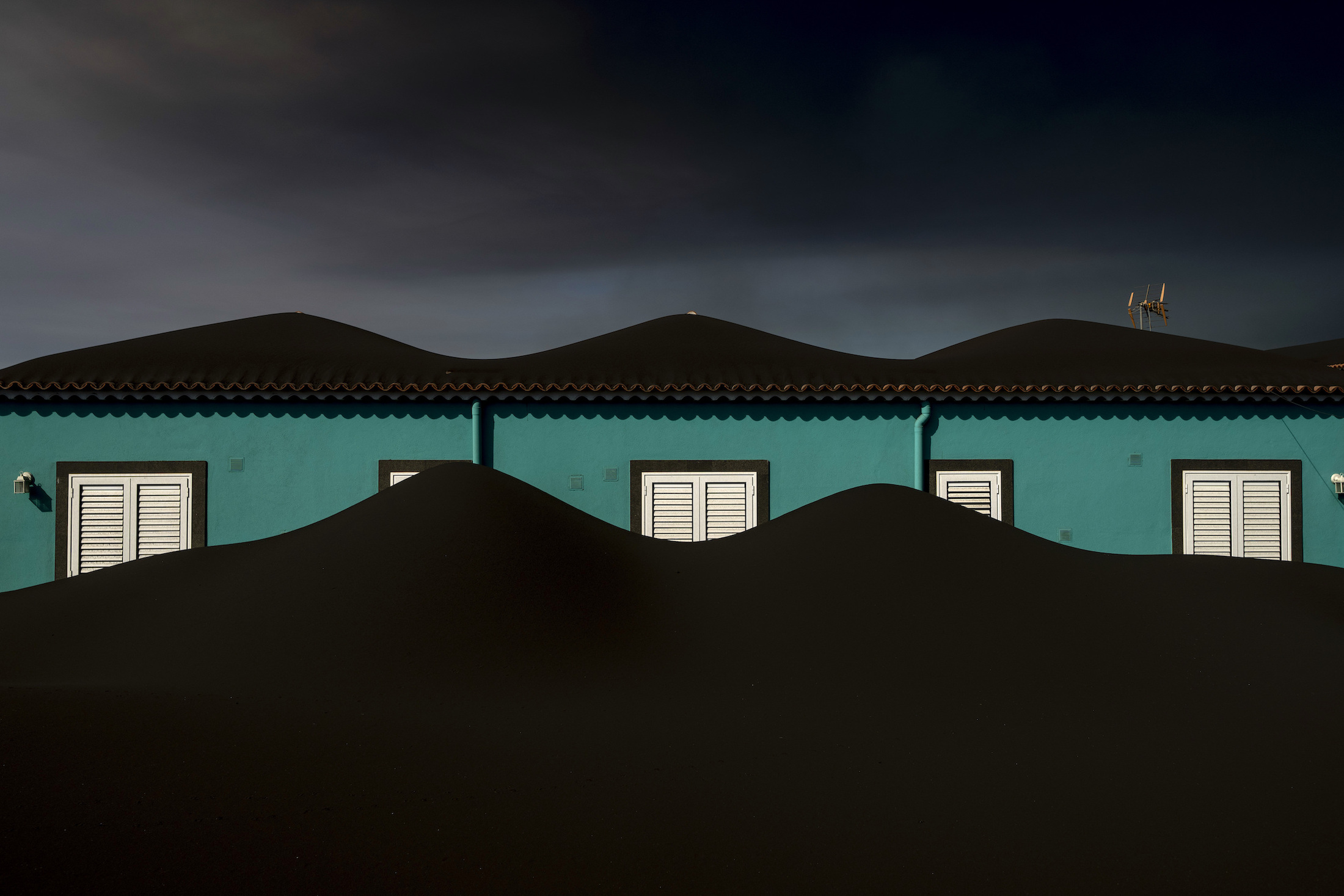子供用のブランコや、中庭の噴水。避難勧告が敷かれて以来、グラスはトレイに乗せられたまま放置されている。これからすべてが消えてしまうのだろう。スペインのカナリア諸島にある、ラパルマ島の火山から噴出する真っ黒な火山灰が嵐のように舞い、地面のいたる所に吹き溜まりを作る。
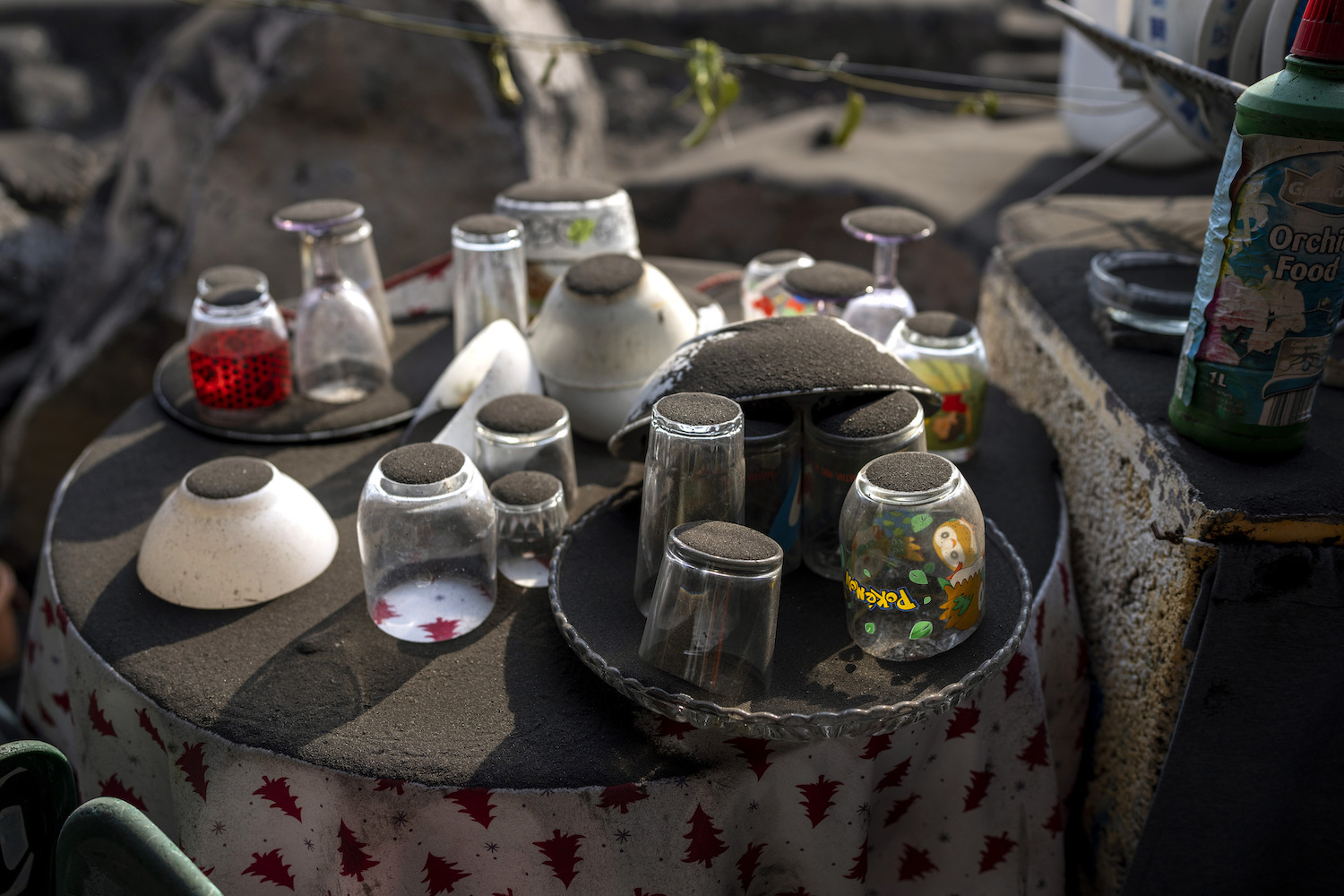
AP Photo / Emilio Morenatti
立入禁止区域では、溶岩により建物が破壊され、墓地は降り積もった黒い雪で覆われている。ハンモックの置かれたリビングルームから人影が消え、その直後、容赦なく流れ出る溶岩流は家屋を飲み込む。
クンブレビエハ火山の麓にある家や田畑には、溶岩が原因となるのか火山灰に埋もれてなのか、消滅の危機がゆっくりと迫っている。

AP Photo / Emilio Morenatti
9月19日に噴火して以来、クンブレビエハ火山から大西洋までの2万エーカー(8200ヘクタール)への立ち入りが規制されている。ラパルマ島の西海岸地域を二分する規制区域を自由に移動できるのは、警察や軍、科学者のみである。
自然豊かなこの島はかつて、住民や観光客にとって、この世の楽園であると言い表されていた。温暖な亜熱帯気候に属するスペイン領カナリア諸島では、バナナの木が栽培され、海辺での休暇を過ごす観光客や引退後の移住生活を楽しむ人々が、スペインなどヨーロッパから訪れていた。
立入禁止区域の境域では現在、車やトラックに乗った避難住民が列を作って待機している。貴重品を持ち出すため、または危ない状況にある土地や家、家財を確認するため、付き添いを受けて一時帰宅する許可を待っているところだ。
人間による歳月と地質時代は火山を機につながった。足元にあることが当然であると考えられていた大地は、噴火によって大混乱に陥った人々の生活と同様に流動的で予測不可能なものになっている。溶岩が流れ出し、火山灰が堆積するにつれ、生きる術を奪われたすべての人々の苦悶が増す。
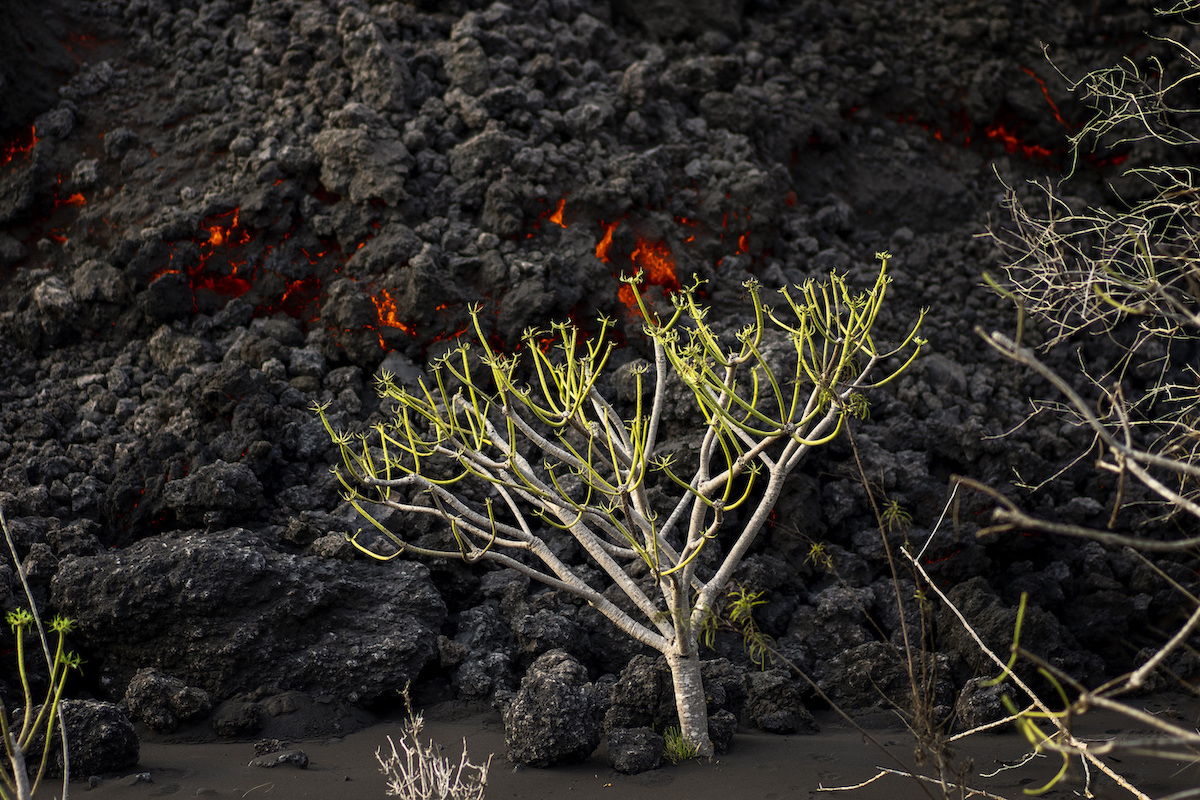
AP Photo / Emilio Morenatti
立入禁止区域では、住民が「獣」と呼ぶ地鳴りだけが聞こえてくる。火山から絶え間なく鳴り響いているため、会話はほとんど聞き取れない。置き去りになった犬の鳴き声や、なくなった小屋を探して空を旋回するハトの一群が発するざわめきも、あらかたかき消されてしまう。
警官に付き添われ、崩壊する自宅を目の当たりにしている家族が嘆き悲しむ声が聞こえてくる。同じ通り沿いにある1000棟超の家が、溶岩流によって破壊された。
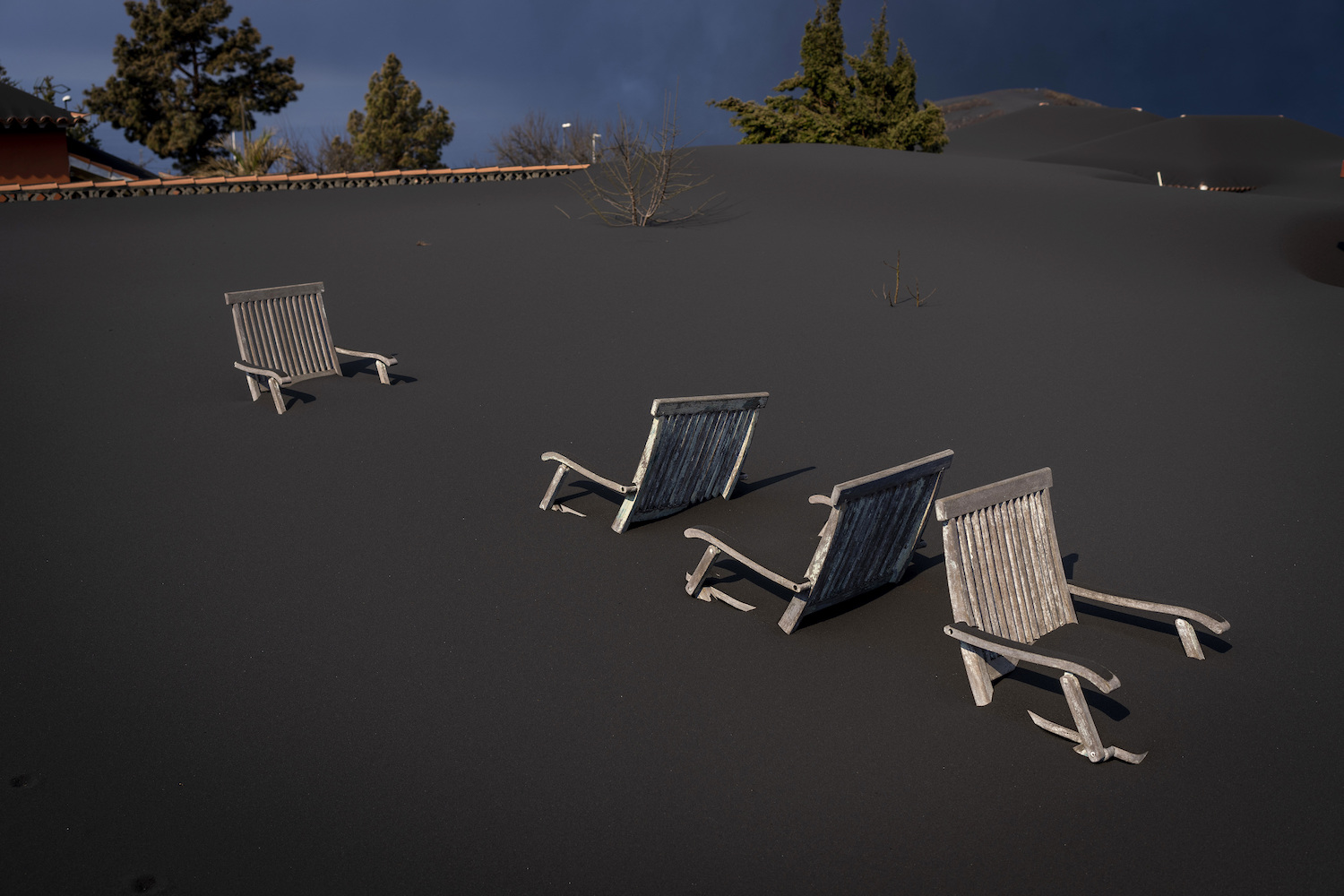
AP Photo / Emilio Morenatti
上空数千メートルの高さにまで広がっている火山灰のなかでも、重く厚みのある塊は最終的には重力で落ちてくる。堆積した灰は次第にドアを覆い、窓から中へと流れ込み、その重みで屋根が崩れる。車のルーフやバナナの葉に叩きつけるような、まるで雹(ひょう)のような大きな塊も含む。
建物の全景や高く伸びた煙突、森林地帯、張り出し屋根にいたるまで、風景のなかで特徴となるような目印が火山灰によって消されている。
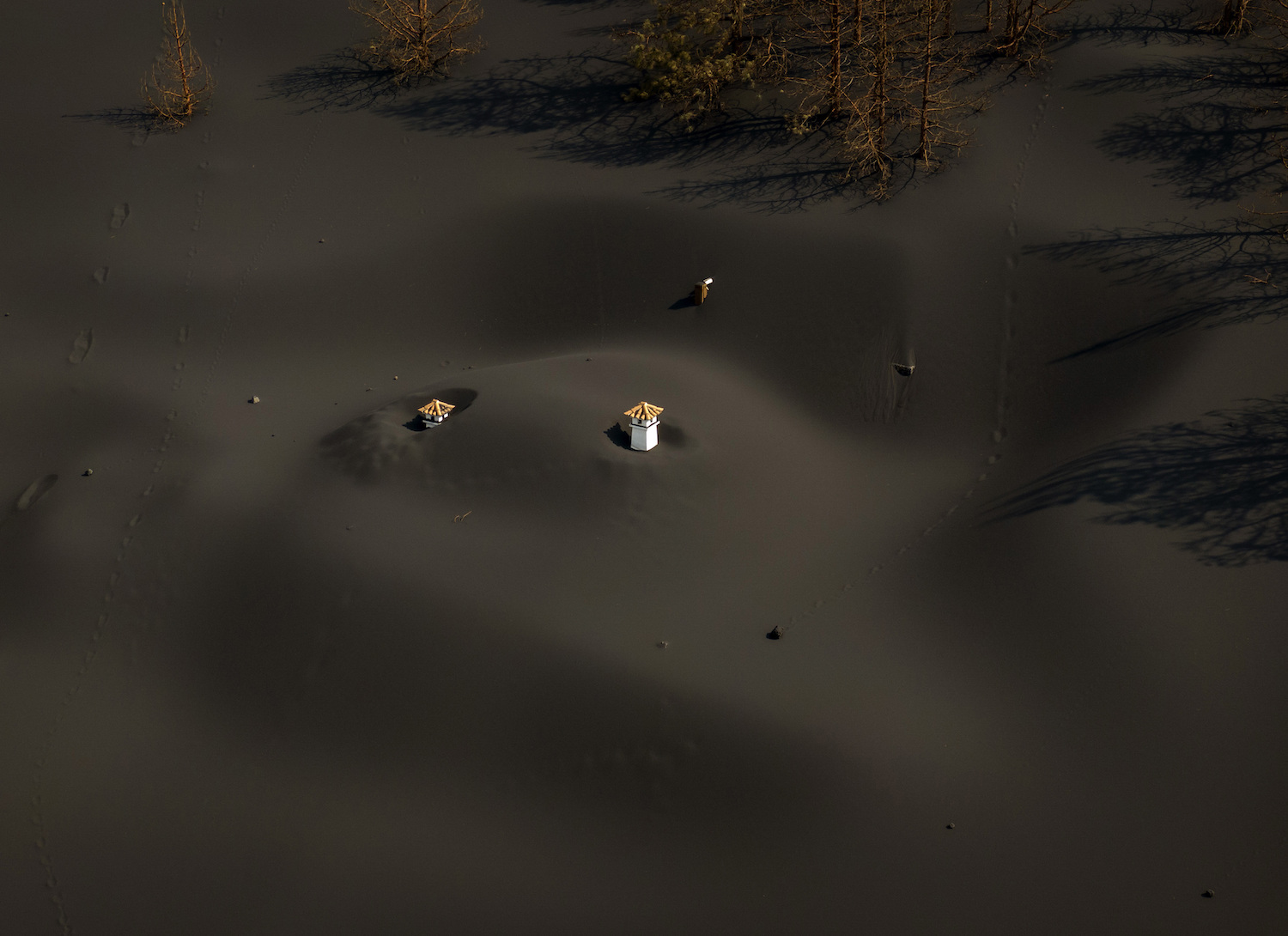
AP Photo / Emilio Morenatti
「自分の家ですら認識することができません。周辺にあるものもまったくわかりません。近所の住宅も、山すらも、見分けがつかないのです。あまりにもすべてが変わりすぎて、いまどこにいるのかもわかりません」と、クリスティーナ・ベラさんは涙を流す。
7000人超への迅速な避難指示により、犠牲者を出すことは回避できた。墓地に眠る人は、火山灰によってさらに埋葬されることになったが、埋葬者を記した墓碑は灰によってすっかりと消されてしまった。
大惨事のさなかであっても、荘厳な瞬間が顔を出すこともある。この漆黒の世界のなかで輝くような明るい色彩がある。
汚れのないきれいで小さな低木が揺れている様子は発光する緑色の球体のようであり、サンゴ礁に住むスポンジ状の生き物、もしくは、異星から来た天体のようだ。
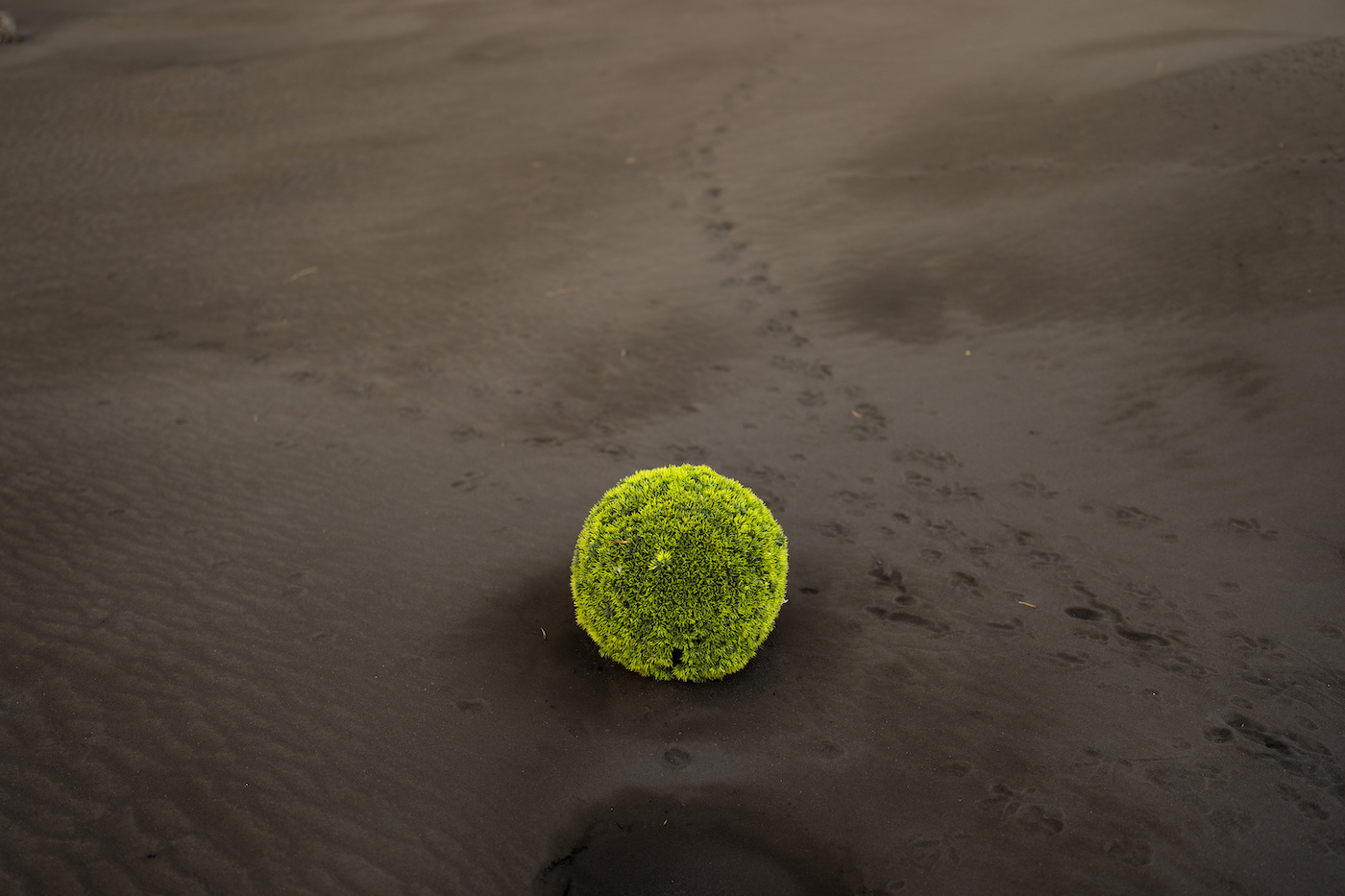
AP Photo / Emilio Morenatti
—
By EMILIO MORENATTI and JOSEPH WILSON Associated Press
CUMBRE VIEJA EXCLUSION ZONE, Canary Islands (AP)
Joseph Wilson reported from Barcelona, Spain.
A child’s swing. A fountain in a courtyard. A tray of glasses abandoned under the duress of escape. All will disappear as a blizzard of dark ash blows from a volcano on La Palma island and drifts to the ground inch by inch, foot by foot.
Inside the exclusion zone, there is destruction by lava as well as burial in a sepulcher of black snow. A living room furnished with a hammock sits empty in the final hours before an implacable tongue of molten rock crushes an entire house.
Whether the end comes from lava or from ash, homes and fields located below the Cumbre Vieja volcano face annihilation in slow motion.
Since the eruption started on Sept. 19, authorities have declared more than 20,000 acres (8,200 hectares) between the Cumbre Vieja volcano and the Atlantic Ocean off-limits. Only police, soldiers, and scientists are allowed to move freely in the exclusion zone, which cuts La Palma’s western shore in two.
The lush land previously approximated an earthly paradise for both residents and visitors. Spaniards and other Europeans spent vacations or retired here to be near the sea, while locals harvested banana trees in the semitropical warmth of Spain’s Canary Islands.
Now, evacuated residents line up in cars and trucks on the zone’s edge, awaiting permission to make escorted trips home to rescue their dearest possessions, or at least see their endangered properties.
Human time and geological time were brought into sync by the volcano. What once seemed a given — the land beneath people’s feet — becomes as fluid and unpredictable as the lives the eruption threw into tumult. The creep of the lava, the buildup of ash, are matched by the growing anguish of the men and women whose way of life is being erased.
Silence would reign in the exclusion zone if it weren’t for what residents have named “the beast.” The volcano’s constant roar makes conversation almost impossible, nearly drowns out both the barking of abandoned dogs and the murmur of a flock of pigeons circling the sky in search of a coop that no longer exists.
Another sound: families weeping as they are accompanied by police to witness their homes as they succumb. Lava flows have destroyed more than 1,000 houses in their paths.
The ash is jettisoned thousands of meters into the sky, but the heaviest, thickest particles eventually give way to gravity. They accumulate into banks that slowly cover doors, pour into windows, make rooftops sag. Some particles are so big that when they pummel a car roof or the fronds of a banana tree, it sounds like hail.
Entire houses, right up the chimney, whole forests, right up to the canopy, the ash erases the distinguishing features of the landscape.
“I can’t even recognize my home,” Cristina Vera said while weeping. “I can’t recognize anything around it. I don’t recognize my neighbors’ homes, not even the mountain. It has all changed so much that I don’t know where I am.”
The quick relocation of more than 7,000 people has prevented the loss of human life. At cemeteries, though, the occupants go through a second burial by ash, a burial that will wipe away the markers that note the place where they were put to rest.
Yet amid the apocalypse, there are moments for the sublime to emerge. The colors that remain gain in their brilliance against the new ebony backdrop.
A small shrub, shaken clean, becomes a luminous green globe, a sponge pulled from a coral reef, an orb from an alien world.
___
By EMILIO MORENATTI and JOSEPH WILSON Associated Press
CUMBRE VIEJA EXCLUSION ZONE, Canary Islands (AP)
Joseph Wilson reported from Barcelona, Spain.
